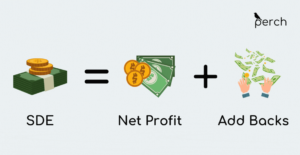This is a sponsored article submitted to us by Perch.
The team at Perch has evaluated thousands of Amazon businesses since our founding. We’ve looked at straight-forward brands with relatively small SKU counts, massively complex operations that have large catalogs in multiple marketplaces and channels, and everything in between. Mercifully, my first ever deal was a beautiful single ASIN brand, and mercifully I now have a talented team that is working on the much more complex deals we’re seeing today.
Regardless of the nature and size of your business, we’ve found that, for many sellers, the process of selling their Amazon business is opaque and confusing when they first start talking to acquirers. Common questions include:
- How do you determine valuation?
- What multiples will I be likely to get and why?
- What are the types of payout structures and what makes the most sense for me?
So we pulled together a few answers to these questions to bring some clarity to the entire process.
Understanding Valuations: It All Starts With SDE
One of the most important metrics that will impact your deal value is Seller’s Discretionary Earnings (SDE). Simply speaking, SDE is the cash flow and benefits a business has generated over a period of time, typically a year. The calculation is fairly simple:
SDE = Net Profit + Add Backs

When we discuss multiples, we’re talking about a multiple of SDE, so coming to the right number is critically important. Getting an accurate view of your SDE simply requires reflecting what the true cost of operating your business is. In essence it’s all of your income, minus all of your operating costs, but with “Add Backs” for things like seller salary, certain non-recurring items, and discretionary expenses.
For an in-depth breakdown of Add Backs and SDE, check out this blog.
Multiples and Why Now is the Best Time to Sell Your FBA Business
Just a year ago, multiples for Amazon businesses were around 2.5x. But since April 2020, firms acquiring successful Amazon businesses have raised over $4B, pushing up multiples as they bid against each other for top Amazon businesses.
Today, it’s fairly standard to see an offer around 3.5x or higher.
Here are a few reasons why selling your FBA business now makes a lot of sense:
- Historically high multiples that might not stay around forever: Retail TouchPoints has called the frenzy to acquire FBA businesses a “modern-day gold rush,” and, like any gold rush, there’s likely to be a window of opportunity where multiples are at their peak. It could be right now. It could be in 6 months, but multiples won’t always stay this high, especially as new players are faced with the task of actually running and operating brands at scale.
- The COVID Impact: Not every Amazon brand saw a massive spike in sales last April, but many did. The pandemic pushed consumers to embrace eCommerce in a radical way, condensing 5 years of digital acceleration into just a few months. We’re just now hitting the period where sellers have a full trailing twelve months revenue (TTM) that benefit from the pandemic, which means their SDE could be abnormally high, though, of course, we’ll want to get an accurate picture of your brand performance moving forward as well. If you had too dramatic of a profit lift from COVID, it may mean a lower multiple if the Buyer doesn’t view the performance as repeatable, but many brands are coming off of a pretty balanced year.
- Higher Capital Gains Taxes on the Horizon: President Biden recently announced the American Families Plan, a proposal, which, if passed as-is, would include one of the largest hikes to the capital gains tax ever. Under the proposed legislation, it would reach 39.6% for individuals with incomes over $1M, but it could go as high as 43.4% when including the Medicare surtax. The proposal would likely go into effect for the 2022 tax year, which means selling your Amazon business today could likely save you hundreds of thousands of dollars in taxes.
Payout Structures and Keanu Reeves

The vast majority of Amazon transactions include a mix of cash at close, and cash that is earned or deferred over the next few years after the sale. Although we recognize that each seller is different and has different priorities, we work with our sellers to make the deal structure fit their needs. There are several different types of payments that can be added to the cash at close. These are often called “deferred consideration.” Here are a few:
- Guaranteed: This is money that won’t be paid at close, but will be paid out in installments over time. Pretty straight forward!
- Stability Payments: These are performance-specific. You agree on certain thresholds that the brand must meet over a certain period of time, and, if they are met, the seller is paid a predetermined amount of money. If the brand hits the metric, you’ll get paid. These are usually used to help align incentives around a smooth transition – you should expect this if you have a semi-complicated business in some way.
- Earnouts: This is similar to stability payments, but instead of a predetermined payout, it’s a profit share. So if you hit X amount of profit growth, you’ll get a certain percentage of any profit that goes over that number.
There’s some risk with both stability payments and earnouts in terms of hitting the goals, but that’s why you should only work with an established acquirer who has a track record of successfully transferring control, and significantly improving brand performance.
If you think your brand has the ability to grow but you’ve reached the end of what levers you have – whether due to capital constraints or personal bandwidth – you could make a really meaningful gain by going the earnout route. Think of an actor like Keanu Reeves who was able to negotiate 10% box office take for the first Matrix movie on top of his $10M salary. He ended up making $56M for that film alone, and $260M across the entire franchise. When he looks back at that decision, I’m sure he’s glad he “took the red pill,” so to speak, though it was a tradeoff at the time. Work within your comfort zone, of course, but don’t be scared to take a risk if you think there is significant potential upside.
If you want to learn more about your business’ potential for an acquisition, come find us at Booth #2108!
About The Author:
Nate Jackson, VP, Acquisitions, Perch


